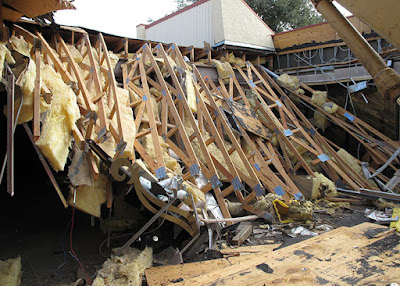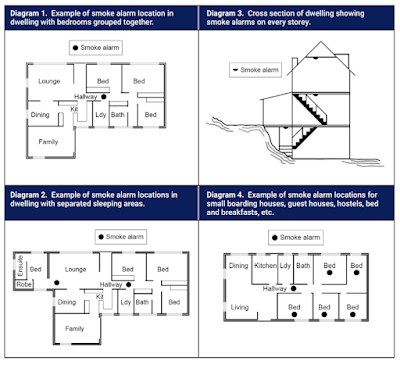The journey towards owning a home is filled with critical decisions and complex considerations. In 2023, the debate between buying and building is as vibrant as ever. In this extensive guide, we'll delve into the intricate aspects of both choices, providing you with all the information you need to make an informed decision.
Buying a House in 2023: An Exhaustive Exploration
Current Market Conditions
Market Fluctuations: Economic factors, local regulations, and consumer demand cause prices to vary. Being aware of these factors and timing your purchase can significantly affect cost.
Mortgage Rates: Fluctuating interest rates impact borrowing costs. Working closely with financial experts to lock in favourable rates could translate into long-term savings.
Inventory: The availability of homes in your preferred location and within your budget affects choices. Comprehensive research and patience may reveal hidden gems that match your requirements.
Advantages of Buying a House
Immediate Availability: Buying an existing home means you can move in immediately after closing, avoiding the inconvenience of temporary living arrangements.
Established Neighborhood: Know the neighbourhood's character, amenities, safety, and community vibe. Enjoy the benefit of established schools, parks, and shopping centres.
Less Administrative Hassle: Pre-existing homes generally involve fewer legal and administrative procedures, enabling a smoother and quicker transition into homeownership.
Disadvantages of Buying a House
Hidden Costs: Unexpected repairs or renovations can add up. Investing in a detailed home inspection, like the services provided by Inspector West, can mitigate this risk.
Limited Personal Touch: Pre-built homes may require compromises on design preferences. Some modifications might be possible, but extensive changes can be expensive and challenging.
Building a House in 2023: A Comprehensive Examination
Understanding the Construction Process
Land Selection: Location, soil quality, zoning laws, and future development plans must be evaluated. The land's potential for appreciation and suitability for your desired home design is vital.
Design and Planning: Engaging architects to align your vision with local regulations ensures that the home will meet your expectations while complying with legal standards. It's a delicate balance that requires expert input.
Construction Phases: Each phase, from the foundation to landscaping, requires meticulous planning, coordination with various contractors, and quality control to achieve the desired result within budget.
Advantages of Building a House
Personalised Design: Control over every aspect of design enables a truly personalized home that reflects your lifestyle, aesthetics, and functional requirements.
Energy Efficiency Options: Implementing cutting-edge technologies can reduce utility costs, provide a comfortable living environment, and contribute positively to the environment.
Potential Appreciation: A strategically chosen location combined with a timeless design can significantly increase property value over time.
Disadvantages of Building a House
Extended Timeline: Weather, material shortages, or unexpected challenges can cause delays. A contingency plan for extended timelines is essential.
Budget Overruns: Managing a budget requires diligent oversight and a well-defined contract with all involved parties. Unforeseen issues can still arise, affecting the final cost.
Inspector West: Comprehensive Support for Homeowners
With Inspector West, you get:
Detailed Inspections: In-depth evaluations of existing homes or ongoing construction to detect potential issues, structural weaknesses, or safety hazards.
Maintenance Advice: Tailored recommendations to maintain your home's value and appeal, identifying potential long-term problems before they escalate.
Reports for Various Stakeholders: Accurate and transparent reports designed to help realtors, buyers, and sellers make well-informed decisions, streamlining the transaction process.
Conclusion: Crafting Your Path to Home Ownership
The journey to homeownership in 2023 is an intricate process filled with complex decisions. On one hand, buying a house offers immediate availability, an established neighbourhood, and less administrative hassle, but potential hidden costs and limited personalisation. On the other hand, building a house provides complete control over design, energy efficiency, and potential appreciation, though it may involve extended timelines and budget overruns.
Choosing between these two paths requires a nuanced understanding of the current market conditions, a detailed examination of personal preferences, and a willingness to either embrace the character of an existing home or engage in the creative process of constructing a new one. Engaging experts like Inspector West for inspections, maintenance advice, and accurate reports can guide you in making this life-altering decision.
Ultimately, whether buying or building, the road to homeownership is a deeply personal and financially significant journey. It calls for thorough research, professional guidance, patience, and an understanding of both short-term conveniences and long-term implications.
Frequently Asked Questions (FAQs)
Q: Is it cheaper to buy or build a house in 2023?
A: The cost comparison between buying and building can vary significantly based on location, design preferences, market conditions, and more. Building might allow for cost savings in some cases, but it requires careful management to avoid overruns.
Q: How long does it take to build a house?
A: Building a house can take anywhere from several months to over a year, depending on factors such as design complexity, weather conditions, contractor availability, and unexpected challenges.
Q: What should I look for when buying an existing home?
A: Look for structural integrity, the condition of systems (plumbing, electrical, HVAC), the quality of the neighborhood, potential renovation needs, and possible hidden costs. Professional inspections, such as those offered by Inspector West, can provide invaluable insights.
Q: How can I make sure my newly built home is energy efficient?
A: Engage with architects and builders who specialize in energy-efficient designs, and invest in technologies such as solar panels, energy-efficient appliances, and proper insulation. This approach will contribute to long-term savings and environmental stewardship.






























